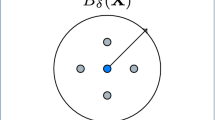Abstract
The FRANC3D/STAGS software system has been developed to model curvilinear crack growth in aircraft fuselages. Simulations of fatigue crack growth have been reported previously (Potyondy et al. 1995). This paper presents two enhancements to this system. One is the generalization of the representation of cracks that allows the system to represent realistic damaged structures more accurately. With this capability, parameters that may affect the trajectory of a fatigue crack are studied. Results are compared with measurements from a full-scale test. The second enhancement is to model stable tearing for residual strength prediction. A stable tearing simulation along a crack path that captures the material nonlinearities inherent at the crack tip is performed. The CTOA (Crack Tip Opening Angle) is used as a crack growth criterion to characterize the fracture process under conditions of general yielding. Residual strength of cracked structures is predicted.
Similar content being viewed by others
Author information
Authors and Affiliations
Rights and permissions
About this article
Cite this article
Chen, CS., Wawrzynek, P. & Ingraffea, A. A methodology for fatigue crack growth and residual strength prediction with applications to aircraft fuselages. Computational Mechanics 19, 527–532 (1997). https://doi.org/10.1007/s004660050204
Issue Date:
DOI: https://doi.org/10.1007/s004660050204




